Exhaust upgrades are fun, easy, and cheap. That’s why many car mod projects start off with simple changes such as deleting the resonator or muffler, after which they typically segue into serious upgrades.
Although removing any exhaust component other than the catalytic converter will have no real effect on performance, it’s a great DIY project to try out.
But before you go ahead and saw-off a part of your exhaust system, it’s best to know what it does and what happens when you drive without it. In this article, we’ll explain the pros and cons of deleting your resonator.
What Does a Resonator Delete Do?
The purpose of exhaust resonators is to change the pitch of your exhaust note and give your muffler something to work with. Resonators are designed to cut out certain frequencies, while mufflers reduce the overall volume of the exhaust.
Without a resonator, your muffler won’t be able to function at full capacity when it comes to making your car quieter.
As the name suggests, a resonator delete involves replacing your car’s resonator with a straight pipe. Doing this doesn’t improve performance because unlike mufflers, resonators don’t have any baffles inside.
In other words, they don’t really restrict the flow of your exhaust — not nearly as much as mufflers and catalytic converters do. If you read our guide on exhaust back pressure, you’ll know why restrictions are bad for performance.
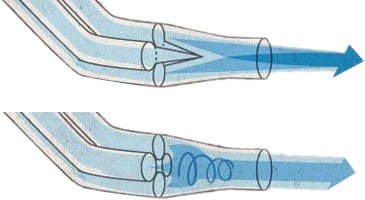
That’s not to say that a muffler delete will improve performance and a resonator delete won’t. Removing your muffler won’t affect performance unless you also remove your catalytic converter, but at that point, you’ll be very close to having a straight pipe exhaust.
A lot of this depends on the car too, because factory exhaust systems are designed according to the car’s engine, usage scenario, market region, and more.
Even though resonators aren’t restrictive and don’t add a concerning amount of back pressure, they might slow down exhaust velocity and dampen the scavenging effect.
So there’s something to be gained by removing them, but you probably won’t feel the difference while driving. With that in mind, deleting your resonator will definitely do two things:
- Significantly change your exhaust note, usually for the better, unless it’s a low-displacement economy car.
- Increase exhaust drone at certain RPM levels, which is very annoying, especially when you’re driving for longer hours.
Whether or not you should delete your resonator is entirely a preference thing. It also depends on what car you drive. Alternatively, you can also choose to keep your resonator and delete your muffler instead.
Aftermarket Resonators: A Viable Alternative
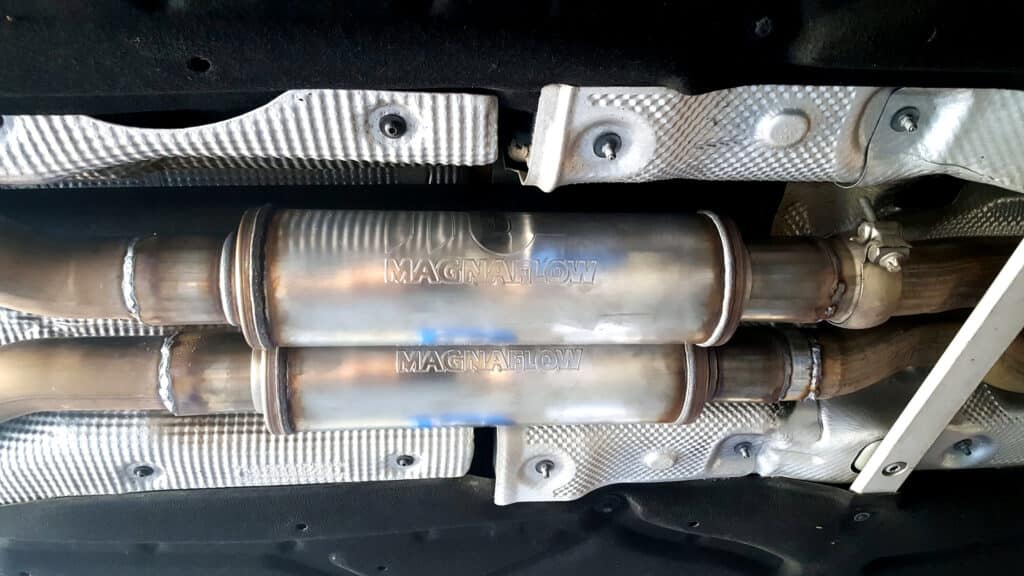
If the idea of removing your resonator appeals to you, but you don’t want to deal with exhaust drone or increase your emissions, then aftermarket resonators are the right solution for you.
You want one that fits your car, obviously. Make sure that the size (length and diameter) of the new resonator is compatible with the rest of your exhaust system.
Also think about your goal; is it to change the way your car sounds or simply to reduce drone? You want to select a resonator that will help accomplish that.
For example, if you like the sound of your exhaust but hate the drone at 3,500 rpm, it makes sense to find a Helmholtz-type resonator that will deaden the noise at that particular engine speed and frequency.
On the other hand, if you just want a better tone in general, you want to find a resonator that will complement your muffler. It’s not uncommon for enthusiasts to install additional resonators to fine tune the exhaust note.
Are Resonator Deletes Legal?

Removing your resonator is legal, however, you’re still required to keep your car’s decibel levels below the legal limits in your region.
Even though resonator deletes are legal in your area, the resulting effect (louder exhaust) of this modification might get you in trouble with the law.
Many times people pair resonator deletes with other modifications like the infamous catalytic converter delete and muffler delete; it’s these modifications that are very illegal.
Will a Resonator Delete Throw a Code?
Like with most things around a resonator delete, the answer to whether a resonator delete will throw a code is a little bit complicated. In most situations, a resonator delete will not throw an engine code.
However, it comes down to two different things. First, are you only removing the resonator? If that’s the only exhaust component you’re modifying, it shouldn’t throw a check engine light.
Does Removing a Resonator Increase Horsepower?
If you’re looking for a quick and easy way to add a few extra ponies to your car, exhaust upgrades might seem like a good idea. But not all exhaust upgrades increase horsepower, including resonator deletes.
Removing your resonator and even your muffler won’t increase horsepower unless you also get rid of your cat-con and get your ECU tuned.
If you have an old resonator in your car with a ton of soot built up inside it, replacing it with a new one or deleting it might free up some power, owing to the removal of the restriction in your exhaust.
How Much Does a Resonator Delete Cost?
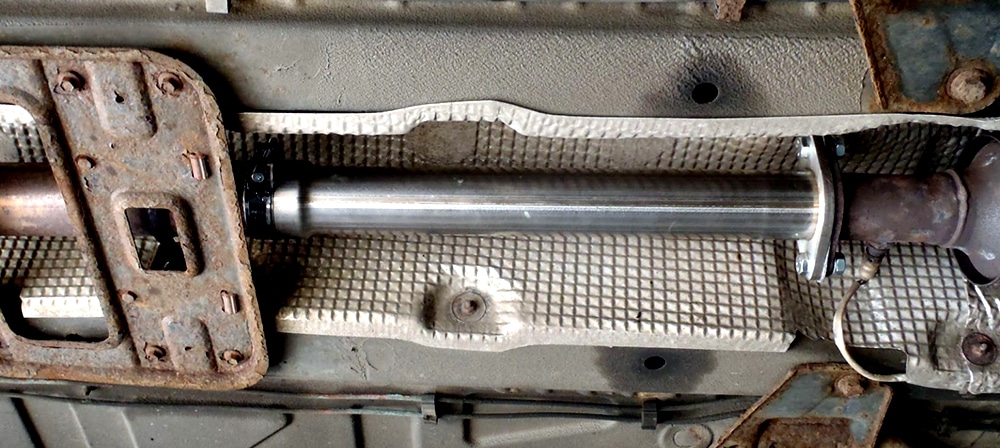
Whether you’re trying to compare the cost of a resonator delete vs a resonator replacement or you’re looking at a resonator delete as part of a larger exhaust project, we’ll break it down for you below.
The good news is that a standard resonator delete is one of the most inexpensive modifications you can make to your vehicle. For all the aftermarket parts to get the job done you should expect to spend anywhere between $100 and $200.
Since many other engine modifications can easily cost $1,000 or more, getting away with a modification for less than $100 seems like a steal. However, that only applies if you’re completing the repair yourself.
If you’re considering a resonator delete, you’ll likely need to complete the work yourself. Because it’s not illegal, it’s not completely unheard of to find a small shop that will take on the work for you.
But if this is the route you take, you can expect to spend at least another $100 to $200 on labor costs to complete the job.
DIY resonator delete
There’s more to a resonator delete than simply unbolting your factory resonator; there’s cutting and welding involved.
That’s because you need to replace the resonator with a straight pipe that matches the size of the rest of your exhaust tubing.
After installing the straight pipe, you’re going to want to re-map your ECU. This is more or less the same process as replacing your catalytic converter with a test pipe.
If you’re looking at removing your resonator and don’t want to pay to have a professional do it for you, you’re not alone.
The good news is that a resonator delete isn’t too hard of a job, and with a bit of help you should be able to do the work yourself.
Start by jacking up your car so you can easily access the exhaust system. This is a good idea even if you can reach your resonator and surrounding exhaust components without raising your car.
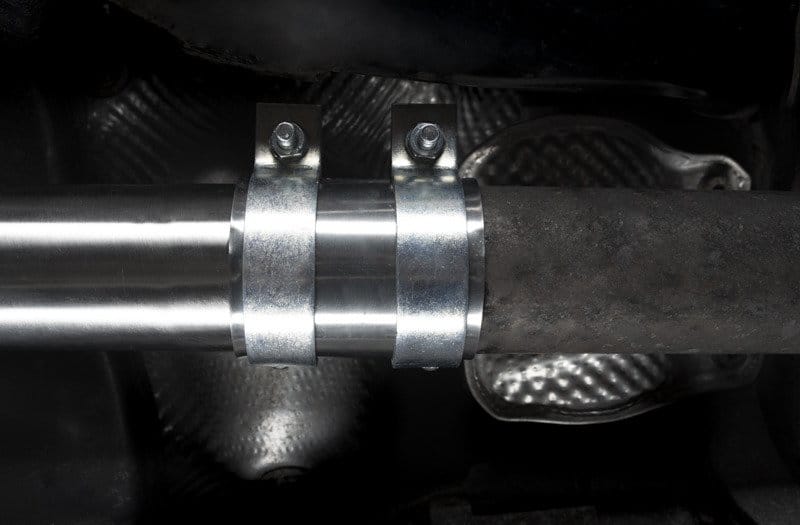
You’ll appreciate all the extra room for when you drop a part of the exhaust system. Once your car is jacked up, locate the resonator; it’s usually placed right between the catalytic converter and the muffler.
On split exhaust systems, it’s pretty common to have two resonators, which means you’ll need two replacement tubes to get the job done.
If you purchase a resonator delete kit that’s made specifically for your car, it will include the correct number of replacement pipes.
Now that you have your vehicle up in the air and know where everything is at, it’s time to get the resonator off.
The cleanest way to do this is to unbolt the section of your exhaust which holds the resonator, and then cut the resonator out with an angle grinder. Alternatively, if you have enough space, you can cut it off directly, with the exhaust still bolted on to your car.
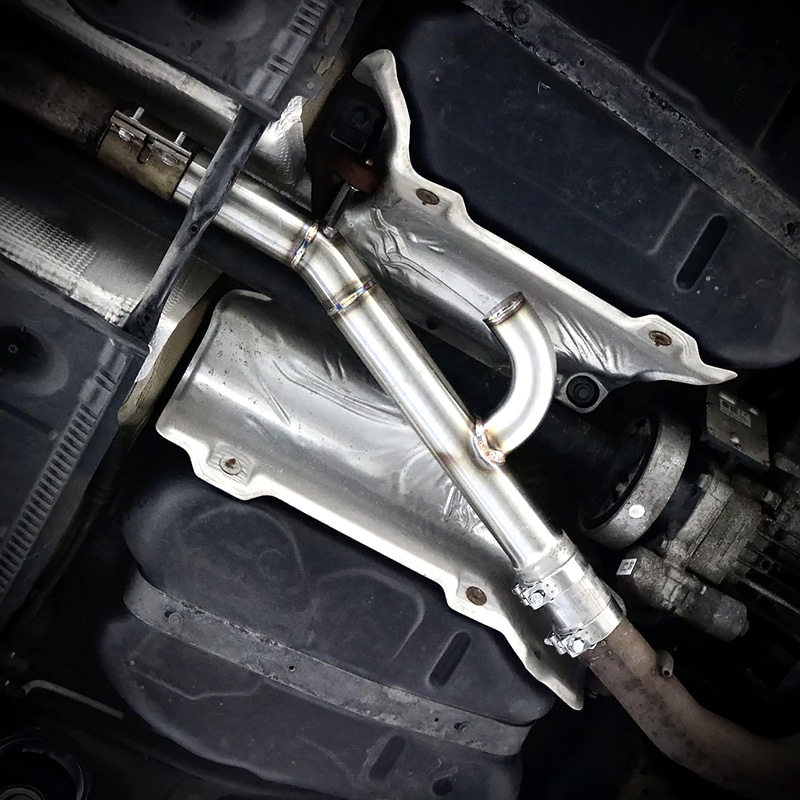
If you’re doing it this way, be careful not to damage other sensitive components around the resonator. Before you start cutting, ensure you’re wearing all the proper safety equipment. This includes safety glasses, hearing protection, and gloves.
Once you finish cutting out the resonator, you can use it as a reference and cut the replacement pipes down to size.
Once you have the replacement pipe trimmed to the right size, proceed to weld it into place. While you can use exhaust clamps, in our experience, welding provides a firmer fitment and gives you better long-term results.
If you don’t have any welding equipment or experience, exhaust clamps are an alternative, but consider paying somebody to weld the pipes in place. If you see yourself taking on more welding projects in the future, consider purchasing a welder for home use.
Concluding Thoughts
If all you want is to make your exhaust louder, then a resonator delete is a good solution. On the other hand, if you’re after more power, then look into catback and axle-back exhaust systems.
With an understanding of how resonators work and why they’re used, you can decide whether removing yours is a good decision.
We highly recommend researching your car and getting in touch with people who have tried out this mod on the same vehicle. By doing that, you’ll know what to expect before you cut off the resonators and potentially end up with a sound you don’t like.
Do you have any questions about a resonator delete or do you have an experience you want to share? We’d love to hear from you.
Drop a comment below and share this post with your friends on Facebook, Reddit, or any of your favorite online communities!

